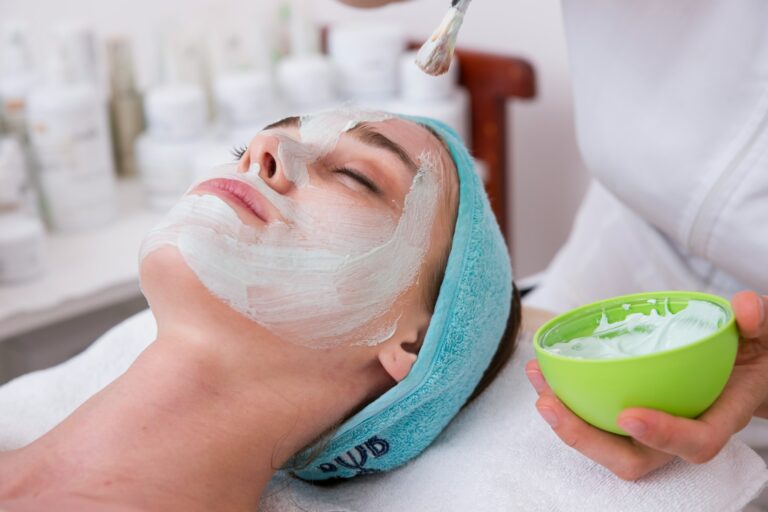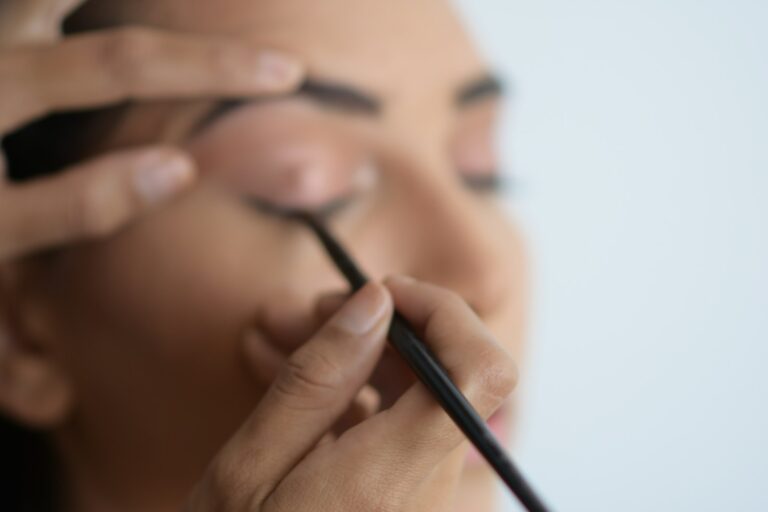There’s a lot of confusion surrounding the use of salicylic acid and benzoyl peroxide in treating acne. Both ingredients are popular in skincare routines, but they serve different purposes that can greatly affect your skin. If you’re looking to improve your complexion, understanding the unique benefits and potential side effects of each can help you make informed decisions for your skincare regimen. In this guide, you’ll gain insights into how these treatments work, allowing you to choose the right option for your individual skin needs.
The Chemical Breakdown: Salicylic Acid vs. Benzoyl Peroxide
Molecular Structure and Mechanism of Action
Salicylic acid is a beta hydroxy acid (BHA) and has a molecular formula of C7H6O3. Its unique structure allows it to penetrate the lipid-rich layers of the skin, breaking down pore-clogging substances such as excess sebum and dead skin cells. The mechanism of action involves exfoliation at a cellular level, which helps reduce acne lesions and improve overall skin texture. In contrast, benzoyl peroxide features a different mechanism, functioning primarily as an antibacterial agent. Its chemical structure includes both a benzoyl group and a peroxide bond (C14H10O4), enabling it to release oxygen free radicals that effectively kill Propionibacterium acnes, the bacteria responsible for acne inflammation.
You may notice that the effects of these two ingredients vary due to their distinct actions. While salicylic acid targets the inside of pores to prevent blockages, benzoyl peroxide acts mainly on the surface of the skin by reducing bacterial levels. This difference is especially important for individuals whose acne is primarily caused by clogged pores versus those experiencing bacterial outbreaks.
The Role of pH in Skin Interaction
The pH level of your skin significantly influences how well salicylic acid and benzoyl peroxide perform. Salicylic acid is most effective at a pH below 3.5, which allows for optimal absorption and exfoliation. If your skin is overly alkaline, the acid may not penetrate effectively, reducing its benefits. On the other hand, benzoyl peroxide is effective across a wider pH range, typically thriving between pH levels of 4.5 and 7. This flexibility enables it to maintain its antibacterial properties while interacting well with various skin types.
Understanding the pH levels of these ingredients can guide you in choosing products that deliver the desired results. For instance, if you find that salicylic acid isn’t working as well as you’d hoped, it could be a sign that your skin’s pH is preventing optimal absorption. Products designed to balance your skin’s pH can enhance the effectiveness of salicylic acid, while regular use of benzoyl peroxide might help maintain a stable, healthy environment for your skin flora.
Unpacking Effectiveness: Acne Treatment Insights
Target Areas: Clogged Pores vs. Bacteria
Salicylic acid serves as an excellent option for those dealing with clogged pores. Its unique ability to penetrate the skin’s surface allows it to exfoliate from within, effectively breaking down the debris that leads to acne. If your concerns primarily involve *blackheads* and *whiteheads*, salicylic acid’s focus on these issues makes it a go-to ingredient for improving overall skin texture. On the other hand, if your main battle lies with *inflamed* and *pustular acne*, benzoyl peroxide is highly effective at tackling the bacteria, *Propionibacterium acnes*, which can lead to breakouts. By reducing the presence of this bacteria, you create a less favorable environment for acne formation.
In essence, your choice of treatment may differ based on your specific acne type. Salicylic acid offers exfoliation and pore-cleansing benefits, making it more suitable for you if your acne is predominantly due to blockages. Conversely, benzoyl peroxide could be more beneficial for those grappling with bacterial-related acne flare-ups, helping to diminish existing pimples while preventing new ones from forming.
Clinical Evidence: Efficacy Comparisons
Research supports the use of both salicylic acid and benzoyl peroxide, but findings suggest distinct advantages depending on the scenario. A study published in the *Journal of Dermatological Treatment* indicated that benzoyl peroxide typically results in quicker reduction of acne lesions among participants, showing a substantial improvement within the first two weeks of use. However, by six weeks, salicylic acid demonstrated comparable outcomes for mild to moderate acne, highlighting its efficacy in combating the condition over time. Some clinical trials have indicated that benzoyl peroxide may reduce inflammation more rapidly, suggesting that it might be preferable for patients needing immediate results.
It’s worth noting that the long-term effectiveness of treatment can vary widely between individuals due to skin type, severity of acne, and overall skincare routines. You may find salicylic acid better tolerated in the long term, especially since benzoyl peroxide can cause irritation and dryness for some users upon prolonged use. Both treatments hold merit, but understanding your particular needs and skin concerns is key for choosing the right one.
Clinical Evidence: Efficacy Comparisons
| Study Findings | Effectiveness |
|---|---|
| Benzoyl peroxide typical improvement | Within two weeks |
| Salicylic acid comparable results | Around six weeks |
| Benzoyl peroxide rapid inflammation reduction | Higher initial efficacy |
| Tolerability over time | Salicylic acid less irritation |
The landscape of acne treatment is continually evolving, and emerging studies regularly reassess the effectiveness of both salicylic acid and benzoyl peroxide. This dynamism highlights the importance of evaluating not only current clinical findings but also your unique skin profile. As you weigh your options, the lasting outcomes may revolve around how each ingredient integrates into your personal skincare regimen and addresses your individual concerns sustainably.
Skin Safety: Side Effects and Sensitivities
Common Reactions and Risk Factors
Using salicylic acid or benzoyl peroxide can lead to various side effects, particularly if you have sensitive skin or if these products are used improperly. Common reactions include redness, dryness, peeling, and irritation. Users may also experience allergic reactions, such as hives, swelling, or difficulty breathing, which can be serious. Always pay attention to how your skin reacts after application, as prolonged use can exacerbate these issues. Certain risk factors can heighten your chances of experiencing side effects, including pre-existing skin conditions, combining treatments, or applying too much product at once.
- Redness
- Dryness
- Peeling
- Irritation
The potential for adverse reactions is significant, especially if you’re new to using these ingredients.
Tips for Minimizing Irritation
To reduce the likelihood of experiencing irritation from salicylic acid or benzoyl peroxide, consider starting with a lower concentration. Gradually increasing strength over time can help your skin adjust without becoming overwhelmed. Pairing these products with a good moisturizer can also provide a protective barrier against dryness and aid in recovery. Additionally, avoid using these active ingredients on broken skin or in conjunction with other harsh treatments, as this can lead to enhanced irritation.
- Start with lower concentrations
- Use a good moisturizer
- Avoid broken skin
Assume that if skin irritation occurs, you might need to take a break from the product for a few days to allow your skin to recover before resuming use.
Incorporating soothing ingredients, such as aloe vera or chamomile, can also significantly ease irritation. Check that your moisturizers and serums contain these calming agents, as they play a crucial role in balancing your skin after using strong treatments. Patch testing new products on a small area of your skin is advisable to gauge how it reacts, providing a safe space to evaluate tolerance before full application. Assume that your skin health is paramount, and there’s no need to rush the process of healing.
- Incorporate soothing ingredients
- Patch test new products
Best Practices: Integrating Both Ingredients into Your Routine
Layering Strategies for Optimal Results
Integrating both salicylic acid and benzoyl peroxide into your skincare regimen can be highly effective when done correctly. Start with a gentle cleanser that contains either ingredient, ensuring that your skin is prepped to absorb treatments more effectively. After cleansing, choose one of the active ingredients to apply first. For instance, if you apply salicylic acid as a toner or serum, allow it to dry completely before layering benzoyl peroxide. This strategy minimizes potential irritation while maximizing the efficacy of both products.
To further enhance results, consider using benzoyl peroxide in the morning and salicylic acid at night. This alternating approach allows both ingredients to work independently without overwhelming your skin. However, if you experience irritation, scale back to using each ingredient on alternating days to maintain a balance that works for your specific skin type.
When to Choose One Over the Other
Your skin’s unique needs may dictate whether you opt for salicylic acid or benzoyl peroxide on any given day. If you suffer from blackheads and clogged pores, salicylic acid is often the better choice due to its ability to penetrate and exfoliate within the pores. Alternatively, for those experiencing inflammatory acne, benzoyl peroxide may be more suitable, as it not only targets the bacteria responsible for breakouts but also helps to reduce redness and swelling.
Choosing between these two ingredients often depends on the type and severity of your acne. In instances where you have mild breakouts with minimal inflammation, salicylic acid may serve as a gentle, effective option. Conversely, if your skin presents with significant redness or you notice pus-filled lesions, benzoyl peroxide can tackle the bacteria directly. Assessing your skin’s immediate condition can guide you in selecting the right ingredient to incorporate into your regimen.
Expert Perspectives: Dermatologists Weigh In
Insights from Practitioners on Treatment Protocols
Dermatologists frequently emphasize the tailored approach necessary when addressing acne with salicylic acid and benzoyl peroxide. Many practitioners recommend starting with salicylic acid for mild to moderate acne due to its ability to penetrate pores and exfoliate dead skin cells effectively. It’s often integrated into daily routines, allowing for gradual improvement and minimizing irritation. In contrast, benzoyl peroxide is often reserved for spot treatments or used intermittently due to its potential to cause dryness. Regular consultations can help you gauge how your skin responds to these treatments, allowing dermatologists to tweak regimens as necessary to optimize outcomes.
For patients dealing with persistent or severe acne, see a dermatologist who may propose a combination therapy approach. This often includes using benzoyl peroxide in conjunction with topical retinoids or antibiotics to combat inflammation and prevent the development of antibiotic resistance. Some dermatologists may suggest using a dual-phase strategy: applying salicylic acid in the morning and benzoyl peroxide at night to minimize irritation while maximizing efficacy. Personalizing treatment plans according to your skin type and acne severity can significantly enhance your overall results.
The Future of Acne Treatments and Ingredient Innovations
The landscape of acne treatments is continually evolving, with ongoing research into new ingredients and technologies. Promising developments include the use of microbiome-based treatments, leveraging beneficial skin bacteria to combat acne pathogens and restore skin balance. Incorporating natural alternatives and innovations such as nanotechnology for better ingredient delivery is also gaining traction, which could enhance the effectiveness of existing treatments like salicylic acid and benzoyl peroxide. Advanced formulations that combine these chemical agents with soothing botanicals or anti-inflammatory compounds could significantly boost tolerability for patients with sensitive skin.
As the beauty industry pivot towards sustainability and skin health, the future may also see more biodegradable alternatives to traditional preservatives in acne care products. Research is ongoing into unique ingredients like probiotics and peptides, which may provide a multifaceted approach to acne by addressing inflammation, hydration, and overall skin resilience. Practicing informed decisions with your skincare routine will be necessary as these innovations become available, allowing you to benefit from cutting-edge treatments designed to keep your skin healthy and clear.
Conclusion
Upon reflecting on the differences between salicylic acid and benzoyl peroxide, it becomes clear that both ingredients serve unique purposes in acne treatment. Salicylic acid is particularly beneficial for individuals with oily or combination skin, as it gently exfoliates and unclogs pores. On the other hand, benzoyl peroxide is often your go-to for targeting deeper bacteria within the skin, making it effective for those with more severe acne. As you consider which option is best for your skincare routine, it’s important to evaluate your specific skin type and acne concerns to select the most appropriate treatment.
Incorporating either salicylic acid or benzoyl peroxide into your regimen can significantly enhance your skin’s health. Be mindful of potential side effects, such as dryness or irritation, and adjust your usage accordingly. By understanding these key differences, you can make informed choices that align with your skincare goals, ultimately leading you towards a clearer and healthier complexion.







